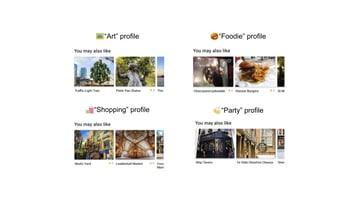SmartGuidedigital audio guide platform continues to enhance travel experiences with advanced...
AI in destination management - 5 examples of practical AI applications
The infusion of Artificial Intelligence (AI) into the tourism sector has marked a substantial shift in how destinations manage and elevate visitors’ encounters. Recognizing the growing importance of AI in the tourism industry, the SmartGuide team recently conducted a workshop specifically designed for Destination Management Organizations (DMOs) and members of tourism boards. The primary goal of this session was to demystify AI's role in tourism and destination management and provide tangible examples of its practical applications.
This blog explores these examples and sheds more light on how AI is reshaping the way destinations interact with visitors, streamlining operations, and creating more personalized travel experiences.
You can watch the video of the workshop conducted by SmartGuide here:
AI's expanding role in travel
AI's integration into various facets of travel operations and customer service has already brought about efficiency and convenience, both for the service providers and the travelers. The role of AI in travel spans several key areas, such as:
- Predictive analytics, powered by AI, now enable airlines and hotels to adjust their pricing dynamically based on demand, season, and buying patterns. This not only optimizes revenue for these businesses but also can offer more cost-effective options for travelers.
- Customer service has seen a substantial upgrade with the introduction of AI-powered chatbots. These virtual assistants provide travelers with 24/7 support, handling inquiries ranging from booking flights and accommodations to providing information about destinations. The immediacy of these interactions improves the planning phase of travel.
- AI technologies such as facial recognition have streamlined processes like airport check-in, making them quicker and more secure. This reduces wait times and augments the overall travel experience.
- Sentiment analysis tools are another aspect where AI shines, especially in customer service. By analyzing customer feedback or complaints, particularly in scenarios like flight delays, AI can determine the appropriate moment to escalate the issue to human agents, ensuring that customer grievances are addressed effectively.
- Content creation, localization and repurposing thanks to the new advancements in large language models such as ChatGPT.
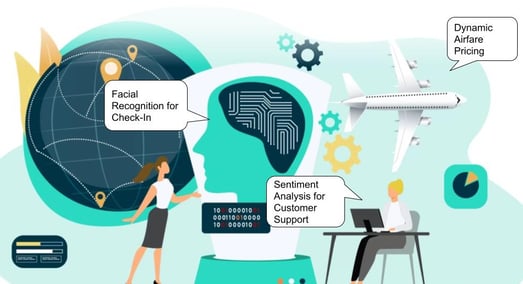
Understanding the breadth of AI
Despite the current hype about generative AI, the area of artificial intelligence encompasses a wide array of technologies and methodologies, each designed to equip machines with the ability to perform tasks that typically require human intelligence.
These technologies range from Natural Language Processing (NLP) and Machine Learning to Neural Networks, Genetic Algorithms, and Decision Trees. Furthermore, AI can be categorized based on its learning capabilities into Supervised and Unsupervised Learning, with each category serving distinct purposes. Supervised Learning involves training AI systems using pre-defined data sets, whereas Unsupervised Learning allows AI to identify patterns and relationships in data independently.
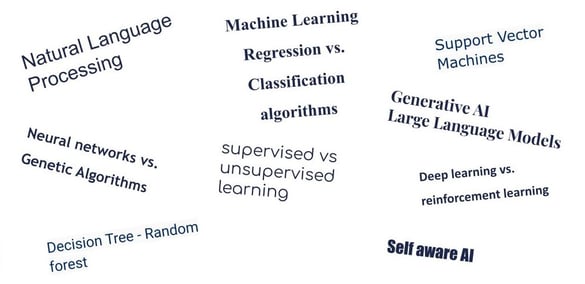
Large language models and Generative AI
Among the diverse spectrum of AI technologies, Large Language Models, such as Chat-GPT, stand out. These models are powered by deep-learning neural networks and have the capability to generate text that mimics human writing styles. The rise of these models has spotlighted AI's potential in various sectors, including tourism, where there's a growing curiosity about leveraging AI for enhancing content creation, destination management and visitors’ exposures. It's crucial to acknowledge that Large Language Models represent just one approach within Generative AI, which itself is a part of a broader AI landscape encompassing various other methodologies, each with its unique strengths, applications and limitations.
AI misconceptions and clarifications
The rapid advancement and adoption of AI for content creation en masse have also given rise to misconceptions and concerns, particularly regarding AI "hallucinations" or the generation of inaccurate information by AI systems.
It's important to understand that such issues are primarily associated with specific types of AI, like chatbots, which rely on pattern recognition and may occasionally produce unexpected outputs. However, this does not imply that all AI technologies are prone to similar issues. For instance, AI systems used in self-driving cars are built on fundamentally different principles, focusing on algorithms such as regression to predict outcomes and classification to group data, thus ensuring reliability and safety.
5 examples of AI applications for destination management
Let's explore five specific use cases of AI applications that hold significance for destination management organizations and tourism boards. These examples demonstrate how AI can improve traveler interactions and provide personalized services, ultimately contributing to the growth of the tourism sector.
1. Content creation
2. Text and speech translations
3. Chatbots as visitor center staff
4. Personalized recommendations
5. Itinerary planner
1) From concept to completion - The role of AI in content creation
Content creation is a critical element in the tourism sector, offering a bridge between destinations and travelers. Historically, the information shared with visitors, whether on websites, information boards, or apps, has tended to be factual but not always engaging. With the advent of AI, there's an opportunity to infuse this content with life, making it both informative and interesting, akin to having a real personal guide.
Opportunities and challenges of using AI in travel content creation
Fast content creation
Generative language models such as ChatGPT and Google Gemini have shown remarkable efficiency in producing content swiftly. These AI tools can churn out articles, guides, and descriptions in a fraction of the time it would take a human content creator.
Entertainment vs. factuality
While AI can often produce content that is more entertaining than many human-written guides, incorporating humor and a conversational tone, it also raises the question of accuracy. Generative AI operates on predicting the next most likely word or sentence, which can sometimes lead to factual inaccuracies.
The importance of iterative refinement
In practice, using generative AI for creating travel content requires a careful balance between leveraging its ability to generate engaging narratives and ensuring the factual correctness of the information provided. For example, when tasked with writing about various landmarks in a city, AI might repeat content or draw inaccurate parallels due to its learning model. For instance, this was observed by the SmartGuide team when generating content for different structures in Passau, where repetition and inaccuracies surfaced with information about the New and Old City Hall. However, with precise instructions and thorough fact-checking, generative AI can produce content that rivals, if not surpasses, the quality of many DMO offerings. This iterative process, involving adjustments and verifications, is key to utilizing the full potential of AI in creating compelling and accurate travel content.
Legal considerations and ethical use
An aspect of AI in content creation that cannot be overlooked is the matter of copyrights. Content produced by large language models based on your prompts and iterations is by default yours, but the process inherently involves copyright considerations. Since the legal landscape is only being created, and in a reactive way no less, it's essential for organizations and content creators to navigate these legal waters carefully, ensuring that the use of AI-generated content complies with current copyright laws and respects intellectual property rights in their area.
Specialized tools for diverse content generation
Content creation is witnessing a notable transition, thanks to the advent of AI tools designed to cater to various forms of media. These tools are augmenting the efficiency of content creation and broadening the horizons for creativity across text, image, and video outputs.
- For text output: Tools like Gemini and ChatGPT are used for generating textual content. They offer a wide range of capabilities to meet diverse writing needs.
- For image output: When it comes to visual content, MidJourney and DALL.E 3 are leading tools for turning textual prompts into compelling images. These applications serve a broad spectrum of purposes, from creating artwork and illustrations and altering visual styles of existing images to generating specific visual concepts.
- For video output: Stable Diffusion or Sora by Open AI. These platforms excel in converting text descriptions into dynamic videos, pushing the boundaries of traditional video production.
Video examples of Sora
The challenge of authenticity
One of the most pressing concerns in the use of AI for content generation in tourism industry is maintaining authenticity, especially when depicting real-world places or scenarios. While these tools can produce content that is visually stunning or linguistically engaging, the errors often lie in the details. Misrepresentations, however minor, can detract from the credibility of the content, making scrutiny and verification essential steps in the creation process.

AI outputs vs. reality
Adapting to rapid technological evolution
The field of AI content generation is characterized by its rapid evolution, with advancements being made at a brisk pace. This environment of constant change necessitates continuous monitoring by creators to stay abreast of the latest tools and techniques. Additionally, the legislative landscape surrounding AI-generated content is evolving, albeit at a slower pace, introducing another layer of complexity to navigate.

Imitation of a specific visual style (e.g. DSLR photo vs. cubist painting vs. art deco poster)
How to communicate with a language model and craft the right prompt
Each AI tool, depending on its underlying model and intended output, requires a distinct approach or "language" for optimal interaction. The nuances of how one communicates with a tool like ChatGPT, for instance, will differ from those used with MidJourney.
Despite these differences, the fundamental principles of clarity, specificity, and creativity remain central to achieving desired outcomes. The core of this interaction lies in crafting effective prompts - a skill that influences the efficiency and quality of the AI-generated output.

Understanding prompts and prompt engineering
At its most basic, a prompt is both a command and a set of instructions directed at the language model. It's the starting point from which the AI begins its task, shaping the direction and scope of the outcome. Recognizing the role prompts play is key to achieving desired results, so constructing prompts thoughtfully and precisely is crucial for achieving the desired results.
Crafting effective prompts
The structure and syntax of prompts can drastically impact the final output. A well-structured prompt that clearly communicates the task, style, and specific requirements can guide the AI to produce outputs that closely align with the expectations. For instance, specifying not just the topic but also the tone, format, and key points you want covered can make a great difference in the relevance and quality of the content generated.
Basic principles for crafting prompts for getting desired outputs
Several proven principles can help optimize the outputs from tools like ChatGPTby applying these rules when creating prompts:
- Specificity: Being as specific as possible in your prompts ensures that the AI has a clear understanding of what you're asking for.
- Clarity: Avoid ambiguity in your instructions to prevent misinterpretations by the AI.
- Examples: Including examples or specifying the desired outcome can guide the model toward your expected result.
- Avoiding negatives: Frame instructions positively, as negatives can sometimes lead to confusion or misinterpretation.
- Repeating key instructions: Always repeat the most important points of your request.
- Breaking down complex prompts: For intricate tasks, decompose the prompt into multiple steps or a series of simpler prompts. This helps tools like ChatGPT grasp and address each component of the task more capably.
- Iteration: Fine-tuning prompts through trial and error discovers the most effective ways to communicate requirements to the AI. Especially for complex tasks, an iterative refinement process is key. This involves adjusting prompts based on the AI's outputs and progressively honing in on the language and structure that yield the best results.
Let's say your task is to generate weekly social media posts for Facebook. Establishing a consistent prompt structure that includes the post's theme, tone, target audience, and any specific phrases or hashtags to include can create a template for the AI to follow. With each iteration, the template can be refined based on the quality of the previous posts, eventually arriving at a formula that consistently produces engaging Facebook content tailored to specific preferences. This saves time and ensures a steady quality of output, making your work more efficient in the long run.
Let’s consider this example of a prompt:
"Assume the role of an experienced marketer and social media copywriter specializing in promoting local events and activities. Craft an engaging Facebook post in German, limited to 600 characters, to invite visitors to the city's 50th annual wine festival. The message should be original, humorous, and family-friendly. Draw inspiration from the style and format of the previous post 'TEXT'. Avoid using expressions 'X', 'Y', 'Z'. Emojis should be incorporated tastefully."
This prompt structure ensures that ChatGPT has all the necessary information to generate content that aligns closely with requirements.
Similarly, if, say, an AI-generated image with DSLR photo quality is required, specifying the desired format, aspect ratio, level of detail, style, angle, and even the type of film or camera can lead to impressively accurate results. Tools like MidJourney excel in text-to-image generation by employing verified formulas and variables, demonstrating how specificity and clarity in prompts can dramatically boost the quality of AI-generated content.
Setting default instructions
For users seeking a more personalized and consistent interaction, ChatGPT+ offers the ability to set default instructions. This functionality allows for the definition of preferences that ChatGPT will apply to all conversations, streamlining the communication process and ensuring that outputs remain within the desired scope without the need to repeat basic instructions in every interaction.
Examples of using ChatGPT in tourist information centers:
- Generating descriptions for events, destination news, etc., and communicating on social media in a consistent style, even in foreign languages.
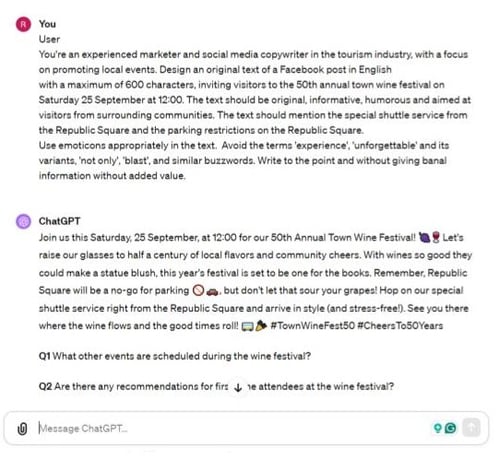
Example of ChatGPT creating descriptions for events
- Rewriting existing texts in different styles for various visitor groups (e.g., facts for adults, fairy tales for children)
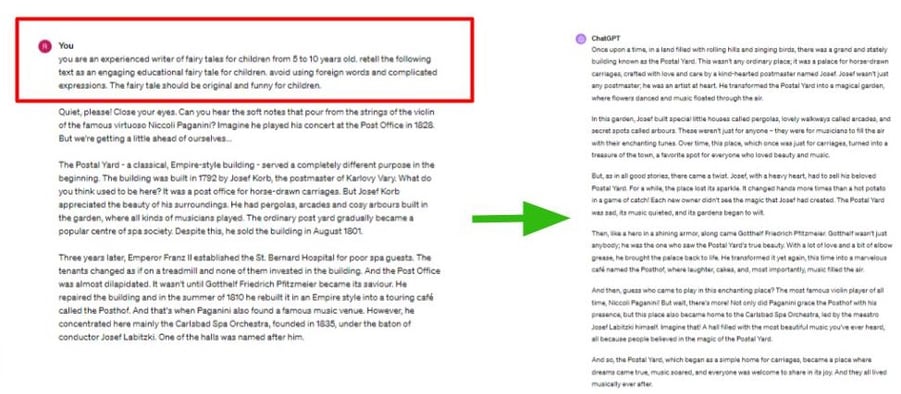
Example of ChatGPT rewriting existing texts in different styles for different demographics
- Destinations and tourist attractions can also use SmartGuide AI, a specially trained AI model, developed using GPT-4 and a mix of AI agents, that underwent extensive refinement over several months and more than 1000 iterations. The outcomes of SmartGuide AI prove the advanced capabilities of AI in creating intriguing content.
By scanning the provided QR codes, visitors can access guides to Bled, Slovenia, in a traditional style, and Bath, England, with a comedic twist, both generated entirely by AI. This illustrates the AI's capability to produce diverse and entertaining content and its capacity for refining guide materials across different themes without human intervention.
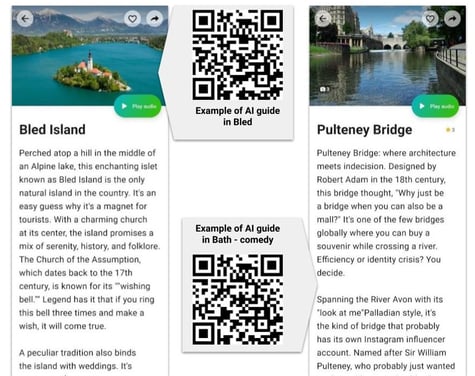
Example of SmartGuide AI Copywriter based on GPT-4
2) Breaking language barriers - Tools for machine translation of text
The ability to communicate across language barriers is necessary in today's interconnected world, especially in the tourism sector. Effective translation not only bridges gaps but also opens up new avenues for cultural exchange and business opportunities for destination, tourist attractions and tourism businesses.
DeepL - Localizing guides through advanced AI translation
DeepL stands out by offering rapid, accurate translations that enable tourism industry entities to connect with international audiences cost-effectively. Its sophisticated technology captures language nuances, delivering content that feels natural to native speakers.
The tool's efficiency is underscored by its ability to achieve 80-95% accuracy depending on language combination, reducing the reliance on expensive human correction. By integrating AI with minimal human proofreading, DeepL cuts translation costs by about 70%, facilitating extensive projects without financial strain.
In the tourism sector, DeepL's high-quality translations—almost comparable to those of human translators—have proven indispensable. They ensure visitors receive clear, reliable information through translated destination content and travel guides, making their journey more accessible and inspiring worldwide.
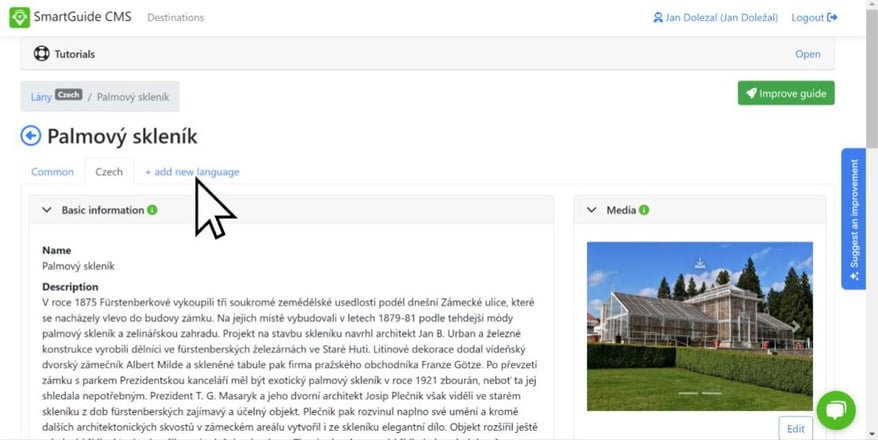
Example of DeepL translation in CMS SmartGuide
AI translations of the entire destination including audio
SmartGuide provides translation solutions, helping DMOs to connect with the international community. Here's how the service works:
AI translation
The platform utilizes DeepL to accurately translate content into one or more of the 30 supported languages (with automated translations indicated as such “This text is automatically translated by AI”). These languages include Bulgarian, Chinese, Czech, Danish, Dutch, English, Estonian, Finnish, French, German, Greek, Hungarian, Italian, Japanese, Latvian, Arabic, Korean, Lithuanian, Polish, Norwegian, Portuguese, Romanian, Russian, Slovak, Slovenian, Spanish, Swedish, Turkish, and Ukrainian.
Voice audio translation
The service includes the translation of all voice audio out of the translated text. This functionality allows content creators (destinations, attractions, tour operators, and travel businesses) to provide multilingual audio guides without the need for human translators or voice actors.

Example of AI translations of the entire destination with SmartGuide including audio
Importance of real-time translation
Real-time translation tools, such as Google Translate, have made meaningful strides in breaking down language barriers on the spot. These tools provide real-time simultaneous translation using voice input, making them incredibly useful in various situations, especially in tourism. The ability to translate conversations and signs instantly helps visitors navigate foreign environments more smoothly. Free and simple applications provide an accessible solution for visitors and locals alike to communicate effectively, addressing acute language challenges promptly. This advancement in technology ensures that language differences are no longer a hindrance to exploration and cultural exchange.

Example of real-time translation with Google Translate
3) Chatbots as visitor center staff
Visitor center staff frequently face exhaustion due to the repetitive nature of inquiries. Reliance on website content alone often falls short, as visitors may overlook this resource. This challenge intensifies outside operational hours when visitors arrive at closed doors, leaving them without immediate assistance.

Chatbots address these issues in the following ways:
Functionality and ease of implementation
Chatbots emerge as a solution capable of managing common queries in multiple languages. By utilizing the destination's website and other credible sources as their knowledge base, these digital assistants efficiently address tourists' questions. The implementation process is straightforward, requiring no programming skills. A chatbot can be added to a website in a few clicks, ready to learn from designated resources to serve visitors effectively.
24/7 assistance and time savings
Offering round-the-clock service, chatbots alleviate the workload on human staff by handling frequent inquiries. This continuous availability ensures that visitors receive timely assistance, regardless of the visitor center's operational hours.
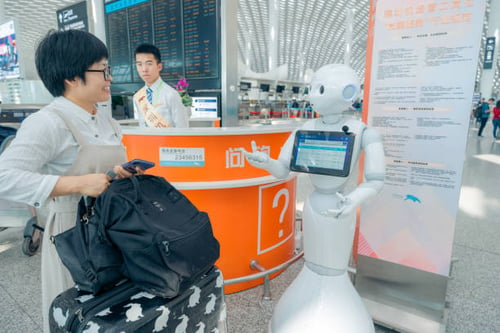
Creating a destination chatbot
- Sign up for an account on a chatbot platform like Dante AI “https://dante-ai.com/?via=smartguide” using either a Google account or an email-password combination.
- After account creation, proceed to develop a custom chatbot by supplying basic information to create a knowledgebase for your chatbot, such as the destination's website URLs.
- Configure the chatbot according to the specific needs and requirements of the destination.
- Copy the chatbot's script and paste it into the website's header, or send it to the website administrator for integration.
- Explore further customization options in design and functionality through the platform's paid versions for more personalized visitor interaction.
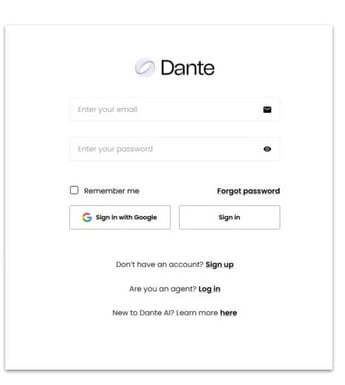
4) The mechanics of AI-powered personalized recommendations and sustainable tourism
Drawing inspiration from the personalized content delivery models of Netflix and Spotify, travel platforms like SmartGuide also offer custom travel suggestions that align closely with individual interests.
The core of this personalization lies in automatic profile customization. In the case of SmartGuide, as visitor interacts with the SmartGuide app—indicating preferences through selections and behavior—the AI model continuously refines its understanding of each visitor’s likes and dislikes. This dynamic profile adjustment leads to increasingly accurate and tailored travel recommendations over time.
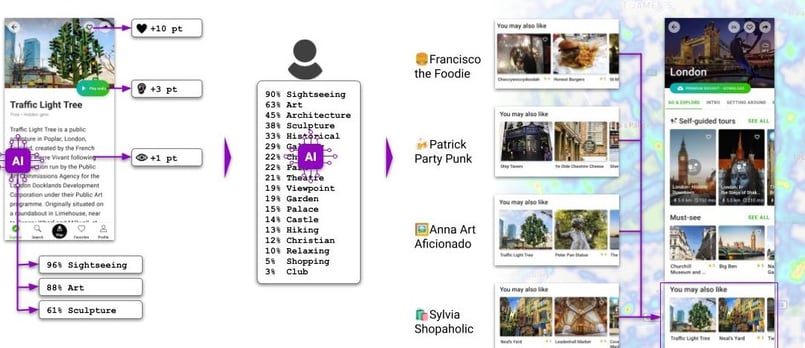
AI recommends different places to everyone based on their interests in SmartGuide app, helping to disperse crowds
One of the major benefits of personalized travel recommendations is their contribution to sustainable tourism. By intelligently distributing tourists across various destinations, these AI-driven suggestions help mitigate the effects of overcrowding in tourist hotspots. This not only enhances the visitors’ encounters by reducing congestion but also plays a vital role in preserving the integrity and sustainability of these destinations.
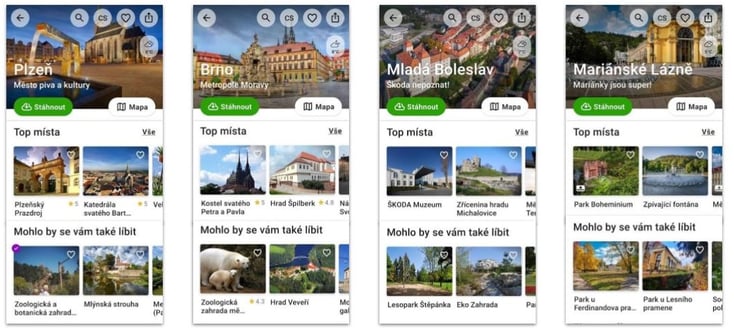
Example of AI personalization in SmartGuide app
5) The vision for advanced itinerary planners
The idea for a radical itinerary planner is ambitious: a tool that accounts for a multitude of factors including location, time, weather conditions, and personal interests. The aim is to craft a seamless travel guide and itinerary planner tailored to each visitor's unique preferences.
Integration of chatbots
In 2023, ChatGPT was utilized by 6% of travelers, marking a growing trend towards AI-assisted travel planning. A key development in making travel planning more accessible and personalized is the integration of advanced chatbots, such as those powered by GPT models, into online travel platforms. Unlike traditional chatbots, these AI-driven assistants can provide natural, bespoke responses to queries about destinations and itineraries. They link users to verified information and multimedia content, offering a richer planning experience.
However, there's a distinction between the output of a chatbot like ChatGPT, which primarily provides text-based suggestions, and the complex, all-in-one itinerary planners that are considered the "holy grail" of travel tech. These sophisticated systems not only suggest personalized itineraries but also immediately map out customized routes, setting them apart from simpler AI chat solutions currently available.
When compared to outputs directly from the ChatGPT application, these systems in development aim to offer several enhancements:
- Personalization: Tailoring suggestions based on the visitor's interest profile, ensuring recommendations are closely aligned with their preferences.
- Verified information: Providing links to verified details about places through the SmartGuide tour guide, increasing the reliability of the information presented.
- Multimedia content: Including output with photos and geolocation, providing users with an actionable route, making it easier for travelers to visualize and locate suggested spots.

SmartGuide integrating chatbots into destination online channels
SmartGuide is currently also developing its AI chatbot and planner tool, promising a future where travel planning is a lot more efficient and deeply personalized.
Conclusion
AI can help destination management organizations and tourism boards with operation efficiency, improve visitor satisfaction, and make tourism more sustainable. There is no need to reinvent the wheel. Many of these approaches are mature in other industries and ready-to-plug-in solutions exist.
The role of AI in transforming the tourism industry cannot be overstated. From content creation and machine translation to the deployment of chatbots as virtual visitor staff, AI tools are changing how destinations engage with visitors. Personalized recommendations and itinerary planning are further examples of how AI tailors experiences to individual interests. These innovations not only optimize workflows for DMOs and tourism boards but also lift the overall journey of visitors, marking a significant leap towards a more interconnected and accessible world.
Do you want to drive your destination's growth through AI? Let's talk.
.png?width=300&height=69&name=Logo%20SmartGuide%20horizontal%20(1).png)



